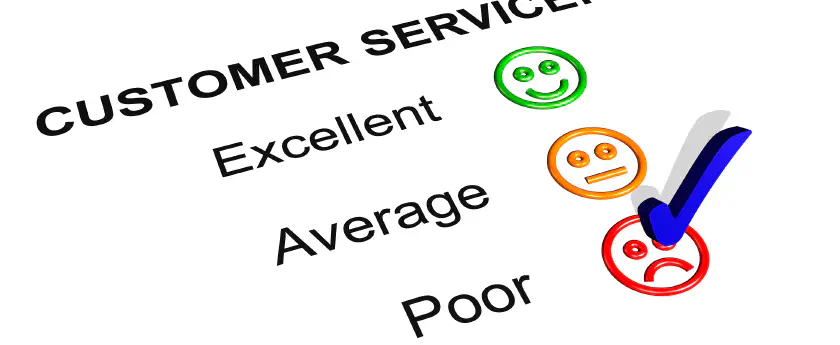What You Don't Know Can Hurt You
I know some people who often repeat phrases such as “What you don’t know can’t hurt you” and “Ignorance is bliss.” I understand why some people believe these statements. We read or watch the news and sometimes feel overwhelmed and/or depressed by all the things happening around the world and even in our own back yards. I actually know some people who avoid the news; stating that it is always bad and they are better off not knowing.
But are they really better off? While the news is full of bad reports, I think of all the good that often comes out of knowing. When the news reports how many people have been adversely impacted by a natural disaster such as an earthquake or a hurricane, many people respond by sending aid. Local tragedies often bring people together as well. Recently in my area people came together to help a charity that had been burglarized by replacing the items that had been stolen. On another occasion, people in our community contributed to an account to help a widow raise her children after her husband was killed in the line of duty.
Sometimes business executives, like the people who do not watch the news, feel inclined to “hear no evil, see no evil, speak no evil” when it comes to what is going on with their employees and/or customers. They choose to bury their heads in the sand and hope for the best. But while this may feel comfortable in the short run, it can have disastrous effects. The trouble with this approach is that problems may exist that, if they are not addressed, can grow until they have the potential to ruin your business. I have a close friend who never developed the habit of going to the doctor for regular checkups. A little over a year ago he began experiencing some pain and for some time he chose to ignore it. Finally, he decided to take the time to get it checked out. Sadly, not only did he have cancer, but it had already begun to spread and was in stage four, only one stage away from end stage cancer. That cancer spread all over his body and this man died.
The same thing can happen to our businesses if we don’t get regular ‘checkups’ to detect problem areas before they grow and spread. Unfortunately, I have seen it happen too many times. The good news is that we can easily avoid this fate. How? By conducting regular employee surveys and customer surveys.
Survey research can reveal hidden dangers and provide us with the knowledge we need to address these issues before they become destructive. There are numerous areas in which problems can arise. Within our organizations, there can be employee issues in the areas of: communication, culture, job satisfaction, engagement, benefits, climate, and working relationships, among others. When it comes to our customers, there can be problems in the areas of: customer support, communications, quality, sales processes, customer service, customer satisfaction, and loyalty, to name a few. Not only can well constructed employee and customer surveys illuminate areas of concern, with the right statistical analyses, they can also reveal the key drivers of employee and customer behavior so that we know which areas it will be most profitable to address. Let’s look at just one of the areas of interest for employees and its impact on employee behavior and profitability — organizational commitment.
Organizational commitment refers to an emotional attachment employees have to the values and goals of an organization and to their roles in relation to these values and goals. In addition, organizational commitment is an attachment to the organization for its own sake, apart from its purely instrumental worth. Research has shown that organizational commitment is positively correlated with attendance, motivation, job satisfaction, and engagement. Employees with high levels of organizational commitment are also more apt to go ‘above and beyond’ their official responsibilities to help customers and the organization. On the flip side, organizational commitment is negatively correlated with absenteeism and turnover. Thus, low levels of organizational commitment are costly to the company.
In an article titled “Employee commitment in retail banking: identifying and exploring hidden dangers” Mark Durkin and Hadyn Bennett discuss the results of a study on organizational commitment conducted in the banking industry. They concluded that low levels of organizational commitment lead to difficulty in successfully implementing change initiatives in companies. It is often necessary to make changes in order to stay competitive in our ever-changing environment. When organizational commitment is high, employees are more likely to embrace and support change initiatives. When employees have low levels of commitment to the organization they are less adaptable, making change difficult or impossible. Therefore the change process that management is trying to implement can be undermined from within by the employees themselves.
Without knowledge of the organizational commitment level of our employees, we risk incurring preventable costs from absenteeism, turnover, and resistance to change efforts. Lack of knowledge of customer behavior can also be costly. In an article published in the Journal of Business Research, Marcel Zeelenberg and Rik Pieters examine the string of events set in motion when a customer has just one bad experience with a business. First, feelings of regret and/or disappointment occur. These are both followed by a feeling of dissatisfaction. Regret, disappointment, and dissatisfaction can all lead directly to one or more of four behavioral responses. These include:
- switching,
- inertia,
- complaining, and
- negative word-of-mouth (WOM) reports.
Switching refers to the customer terminating the relationship with the product or service provider. Inertia refers to a lack of reaction from the customer after a bad experience. Not all customers are quick to react after a negative encounter with a business. Some take no action for some time after the incident. They do not switch to another product or service. However, research shows that after some time the customer may suddenly switch when sufficient alternatives become available or their level of dissatisfaction increases. Complaining is a behavioral response in which the customer either expresses dissatisfaction directly to the company, or to a third party such as a government body or a consumer union. Finally, WOM communication includes any form of communication the customer engages in with members of their social and professional networks. While WOM communication can be positive, unfortunately customers tend to be more motivated to discuss negative encounters than positive ones because the negative encounters are more salient. All of these behavioral outcomes can be costly to the organization.
Conducting regular surveys reveals hidden dangers to our organization’s health enabling us to take corrective action. Let’s look at one organization that recently conducted its first customer survey. The company, an operational endpoint security provider, outsourced their customer survey to the National Business Research Institute (NBRI), a leader in employee and customer research. The results of their first survey clearly showed that obtaining feedback from their customers was long overdue. When comparing the company’s overall performance in customer perceptions with other companies in their industry, their ranking was only at the 47th percentile; three percentiles below the national average. I do not know of any organization that strives to be “average” and a “below average” rating is certainly a great disappointment.
An analysis of the topics on the customer survey rated each of them as either strengths (75th-100th percentiles); opportunities (50th-74th percentiles); weaknesses (25th-49th percentiles); or threats (1st-24th percentiles). The good news was that no topics ranked in the threats category. The bad news was that none ranked as strengths either. The company had only one topic in the opportunities category. The remaining 9 topics were all ranked as weaknesses. An analysis of the individual survey items within these topics revealed similar results with five items in the opportunities category; 24 in the weaknesses category; and no strengths or threats.
Such abysmal results can be disheartening and also overwhelming. With such negative results, where does one begin to make improvements? What do you address first? Fortunately, the company was provided with a Root Cause Analysis (RCA) of their customer perceptions. The RCA is a statistical procedure that identifies one or a few survey items that are driving perceptions. The first RCA conducted revealed two drivers of overall customer satisfaction. They were:
- The company’s products are easy to use.
- The company’s product quality meets my expectations.
Addressing just these two items and taking action to improve customer perceptions of them will dramatically improve customer evaluations.
In the second RCA, three items were found to be drivers of the customer’s intent to return to the business. These items were:
- The amount of interaction that I have with the company is satisfactory.
- Sales personnel offer creative solutions to satisfy my requirements.
- The technical support group understands my issues.
If the company takes action that improves customer perceptions of these three items, they will see an increase in the customer’s willingness to continue doing business with them. While this company was certainly disappointed with the results of their customer survey, they are in a much better position to improve their business now than they were while still in the dark about their customer’s attitudes.
With well-designed surveys and the right statistical analyses, you can be informed of your employee’s and customer’s perceptions and become aware of hidden dangers to your business. If you would like to learn more about how NBRI can help your company reveal the unknown about employee and customer attitudes before they hurt your bottom line, call us today at 800-756-6168.
Dr. Cynthia K. S. Reed, Ph.D.
Organizational Psychologist
National Business Research Institute




























 By submitting this form you agree to our
By submitting this form you agree to our